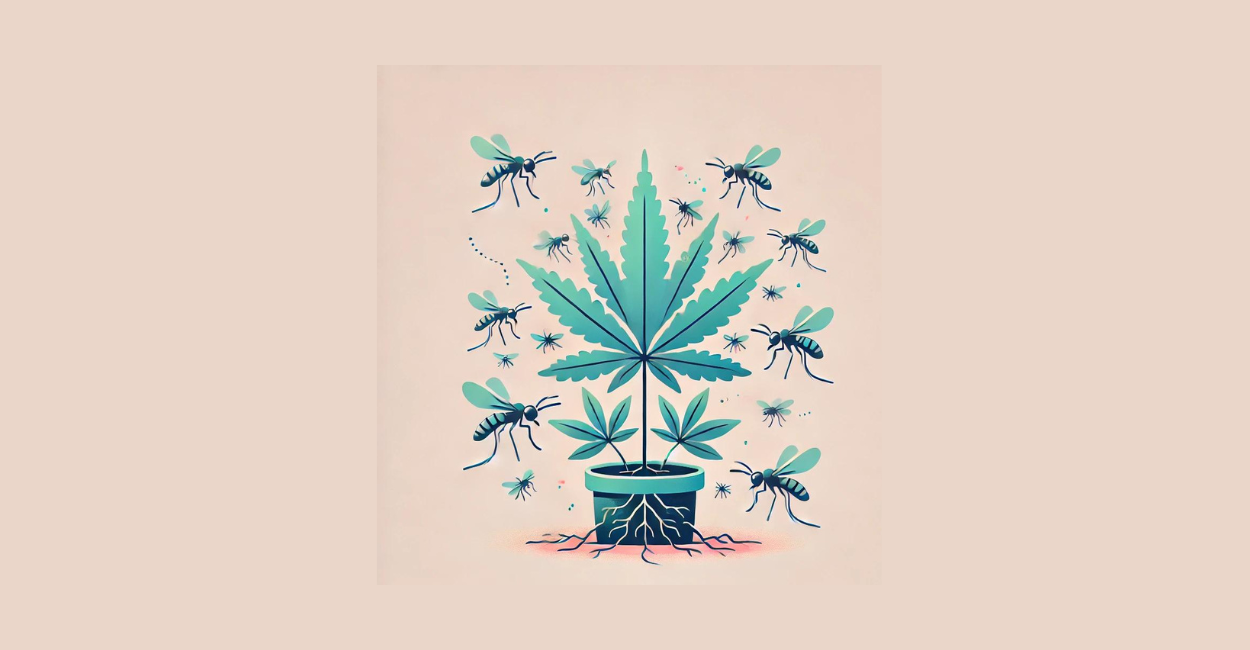In this article, we explore the topic of "Fungus Gnats on Cannabis". Fungus gnats, those tiny, pesky insects flitting around your grow room, may seem harmless at first, but they can cause significant damage to your cannabis plants, akin to an invisible enemy slowly eroding your defenses. These insidious pests lay their eggs in the soil, and their larvae feed on the delicate roots, leading to weakened plants and stunted growth. We will share our experiences in combating fungus gnats, outline the damage they cause, and discuss effective control and prevention strategies to keep your cannabis plants thriving.
Identifying Fungus Gnats on Cannabis Plants
Fungus gnats are small, flying insects that can significantly damage the roots and root hairs of cannabis plants. These pests feed on the roots, which can impact the growth and yield of the plants. From our extensive experience in cannabis cultivation, we know that early detection and treatment are crucial to keeping the plants healthy.
Signs of Infestation:
- Root Damage: Fungus gnat larvae feed on the roots, leading to growth issues.
- Wilted Leaves: Root damage can prevent the plants from absorbing enough water and nutrients, causing the leaves to wilt.
Causes of Fungus Gnat Infestation
Several factors can lead to a fungus gnat infestation:
- Overwatering: Fungus gnats prefer moist conditions. Overwatering the soil creates ideal conditions for their proliferation.
- Damp Soil: Fungus gnats lay their eggs in damp soil, and the larvae feed on the roots.
Prevention and Treatment of Fungus Gnat Infestation
Effective prevention and treatment methods include:
Environmental Control
Maintaining optimal environmental conditions is crucial to preventing fungus gnat infestations. From our experience, proper watering and soil management are key.
- Watering Less Frequently: Water less often to allow the soil to dry out completely between watering sessions.
Pruning and Cleaning
Regular pruning and cleaning can help reduce and control fungus gnat populations.
- Yellow Sticky Traps: Place yellow sticky traps around the plants to attract and catch adult fungus gnats.
Spraying
Spraying the plants can help effectively reduce fungus gnat populations. Neem oil solution has proven to be particularly effective.
- Neem Oil Solution: Mix 1 tablespoon of neem oil with 4 liters of water, add a few drops of dish soap, stir thoroughly, and fill the solution into a spray bottle. This mixture helps repel and combat fungus gnats.
Biological Insecticides and Soaps
Biological insecticides and soaps are effective for treating fungus gnat infestations. In our opinion, these methods are the most effective, and with proper application, significant damage can be avoided, as we have found from experience.
Neem Oil
Neem oil is a natural insecticide that is excellent for combating fungus gnats.
BT Bacteria
Bacillus thuringiensis israelensis (BT bacteria) is an effective biological method for controlling fungus gnats.
- Neem Oil: Treat the top layer of soil with neem oil to eliminate the larvae.
- BT Bacteria: Use Bacillus thuringiensis israelensis in the irrigation water to combat fungus gnats.
- Diatomaceous Earth: Sprinkle diatomaceous earth on the soil around your plants to kill the pests.
Airflow
Improving airflow can help prevent fungus gnat infestations. Our crew has found that good ventilation helps dry out the soil faster and makes it harder for pests to thrive.
- Airflow: Use a fan to blow air over the soil.
Important Note:
Effective control of fungus gnats on your cannabis plants is crucial for their health and productivity. If you notice signs of infestation such as root damage or wilted leaves, adjust your pest control measures. Always monitor the growing environment, as maintaining optimal conditions can prevent infestations. For more information on combating fungus gnats, see our article on Beneficial Insects in Cannabis Cultivation Against Fungus Gnats.
Conclusion:
Fungus gnat infestations can significantly affect the growth and yield of cannabis plants. Early detection, proper treatment, and preventive measures are essential. Our experience shows that a proactive approach and the use of effective pest control strategies ensure healthy, productive cannabis plants.
Disclaimer
This website's content is for informational use only and should not be considered medical or legal advice. Always consult a healthcare professional for health-related issues. Be aware of local regulations regarding cannabis cultivation. We are not liable for any actions taken based on this information.

